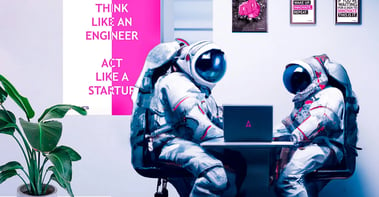Innovation in human resources starts with people. No workflow or tech stack will succeed without investing first in culture, collaboration, and shared purpose. In large organizations, HR is uniquely positioned to orchestrate this from the center.
Done right, HR becomes the connector, helping every business unit understand trends, align around priorities, and build future-ready teams. As new technologies reshape the workplace and generational shifts redefine employee priorities, organizations must rethink everything from hiring to culture to capability building.
In this blog, we discuss the latest HR innovation ideas and technologies shaping the future of work. We also show how the ITONICS software suite can help organizations track, evaluate, and act on innovation opportunities in human resources.
What is HR innovation?
HR innovation means fulfilling changing needs of the organization and its employees by adopting new ideas, methods, and technologies. It also means anticipating future trends—such as AI, workforce flexibility, and inclusion—and making proactive adjustments. Without innovative HR practices, companies risk falling behind in employee experience, retention, and organizational agility.
Innovation in human resources involves more than just digital tools. It requires shifting from hierarchical models to flexible, team-based systems. It’s about treating talent as partners, not just resources. In 2025, innovation in HR requires adaptability, creativity, and human-centricity.
With remote and hybrid work models being established as the new normal across the globe, HR managers must explore innovative solutions to keep employees engaged, and provide them with a good employee experience. HR innovation is, therefore, an urgent need in a post-pandemic work environment.
2025 trends shaping the future of HR
As the workplace evolves, your human resources innovation ideas must respond to complex challenges and opportunities. Below are five leading trends and technologies influencing HR strategies in 2025.
1. Human-centered culture and burnout prevention
Organizations are addressing a growing employee engagement crisis by rethinking workplace culture. A Deloitte study finds increasingly high levels of burnout due to work pressures in Gen Zs (52%) and Millennials alike (49%). Companies are now investing in proactive wellness strategies, designing work environments that emphasize mental health, balance, and purpose. HR teams use real-time data to track wellness indicators, personalize interventions, and create psychologically safe work cultures.
2. Flexible work as a baseline, not a benefit
Despite some calls to return to the office, flexible and hybrid work remain key recruitment and retention tools. Top talent now expects autonomy. Rigid policies are often met with resistance, reducing engagement and increasing turnover. HR leaders are designing context-specific work models based on innovation needs, employee preferences, and performance outcomes.
3. The rise of the agentic workplace: HR and AI
AI is rapidly becoming an integrated teammate—not just a tool. AI agents assist with screening, outreach, scheduling, and even interviews. But HR leaders must now design frameworks for ethical implementation, transparent governance, and employee training. Human oversight remains essential to preserve fairness, inclusion, and creative potential. HR innovation ideas in 2025 must blend tech fluency with human empathy.
4. Cultivating a culture of belonging
DEI remains a priority despite political polarization. New innovations in HR are focusing on creating safe, inclusive environments—beyond metrics. Conflict resolution skills, targeted talent programs, and diverse leadership pipelines are gaining ground. Companies with strong inclusion strategies are more resilient and attractive to top talent.
5. Rethink HR, from admin to strategy
CHROs are evolving into strategic advisors who shape business direction. However, HR professionals themselves face burnout and credibility gaps. In 2025, the most innovative HR practices include building HR visibility, influence, and leadership capacity. Investing in HR as a strategic function is now critical to organizational success.
Anticipate future needs in HR with ITONICS
ITONICS is a leading SaaS provider of systematic innovation management. But the use cases of our software are not limited to innovation or R&D departments: With the help of ITONICS, HR managers can keep track of emerging HR trends and technologies and anticipate how they will impact HR practices. The ITONICS Radar is the tool you need to take the first step toward better understanding the drivers of change in human resources.
ITONICS Trend & Technology Radars are designed to identify and manage emerging trends and technologies impacting the future of certain industries, businesses, or in your case, human resources. Our dynamic and interactive radar visualizations offer a focused vision of the future and help spot new opportunities.
If you want to learn more about the features and functionalities of the ITONICS software suite to innovate your human resource management, get in touch with one of our experts for a personal demo.
Have more time?
- Read How to Keep Track of Future Trends and Challenges in HR Management
- Download the ITONICS Business Value Paper
- Listen to the podcast episode People First - Innovating the Individual





